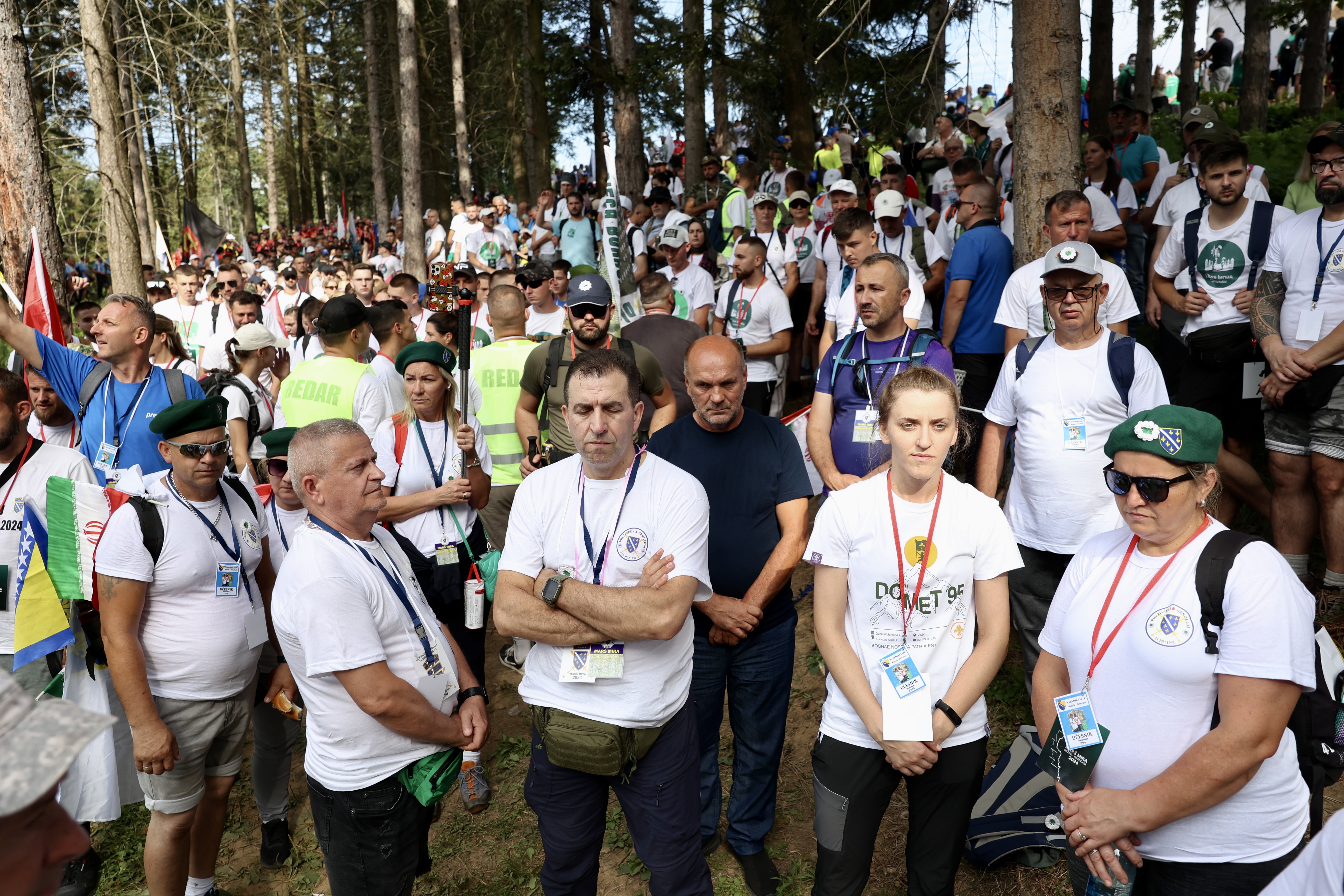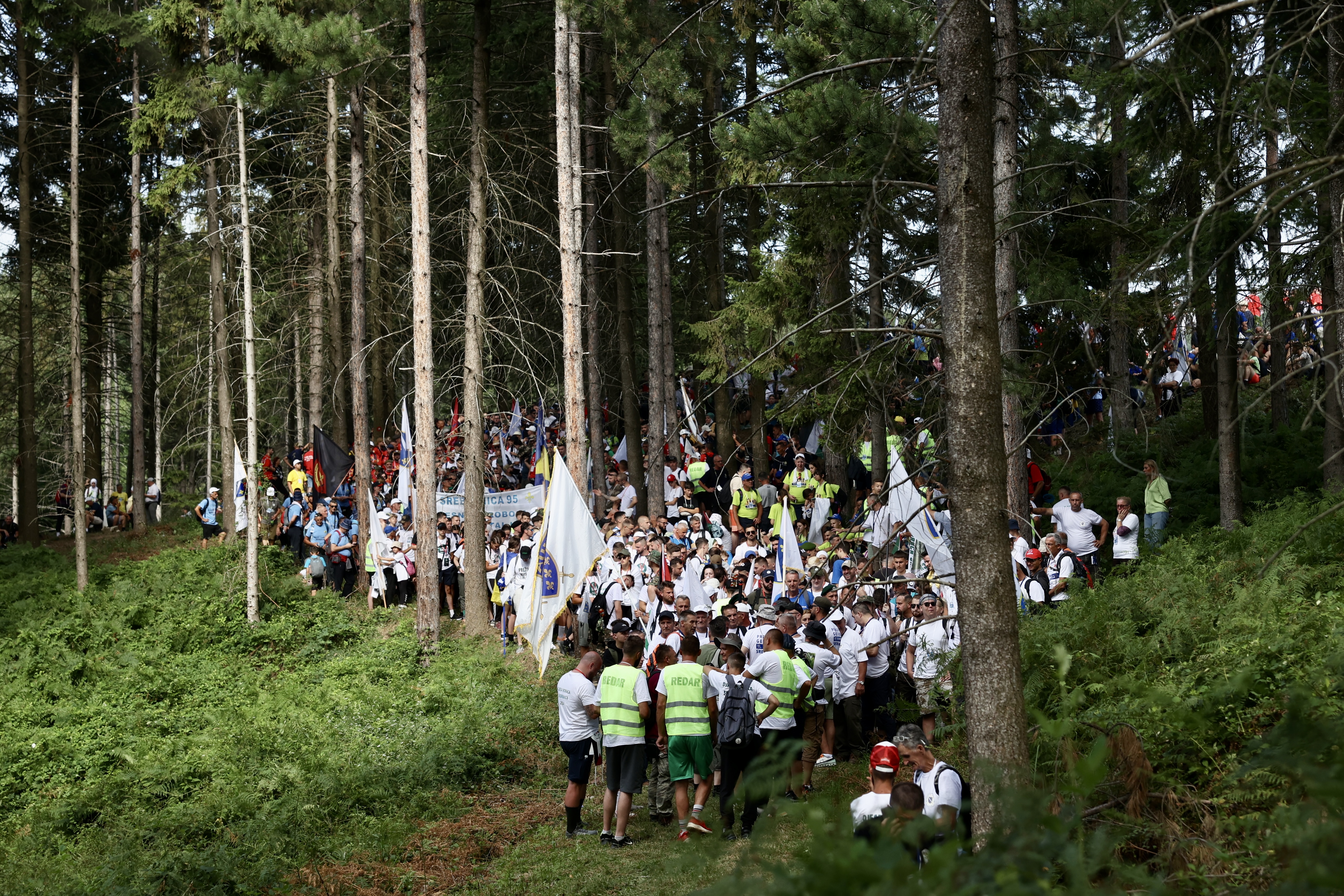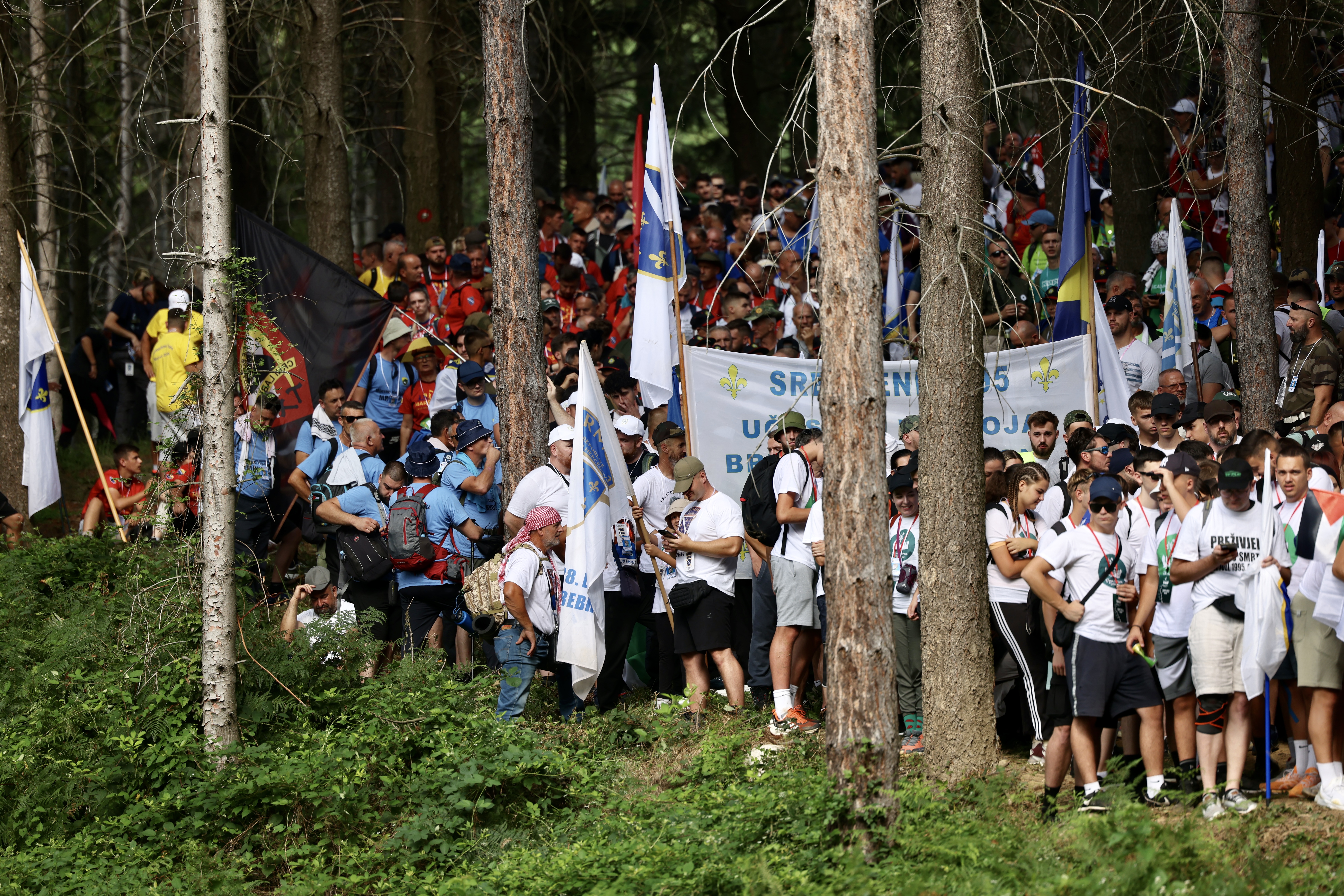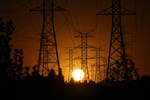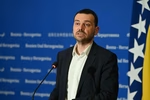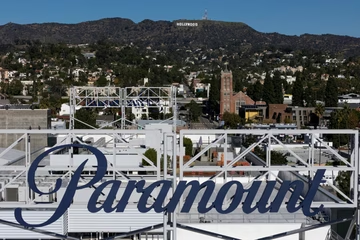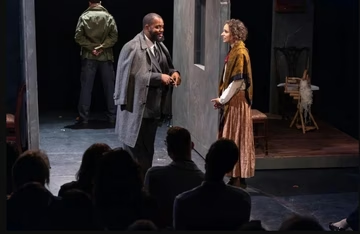5,000 people begin Peace March from Nezuk to Potocari in honor of Srebrenica genocide victims
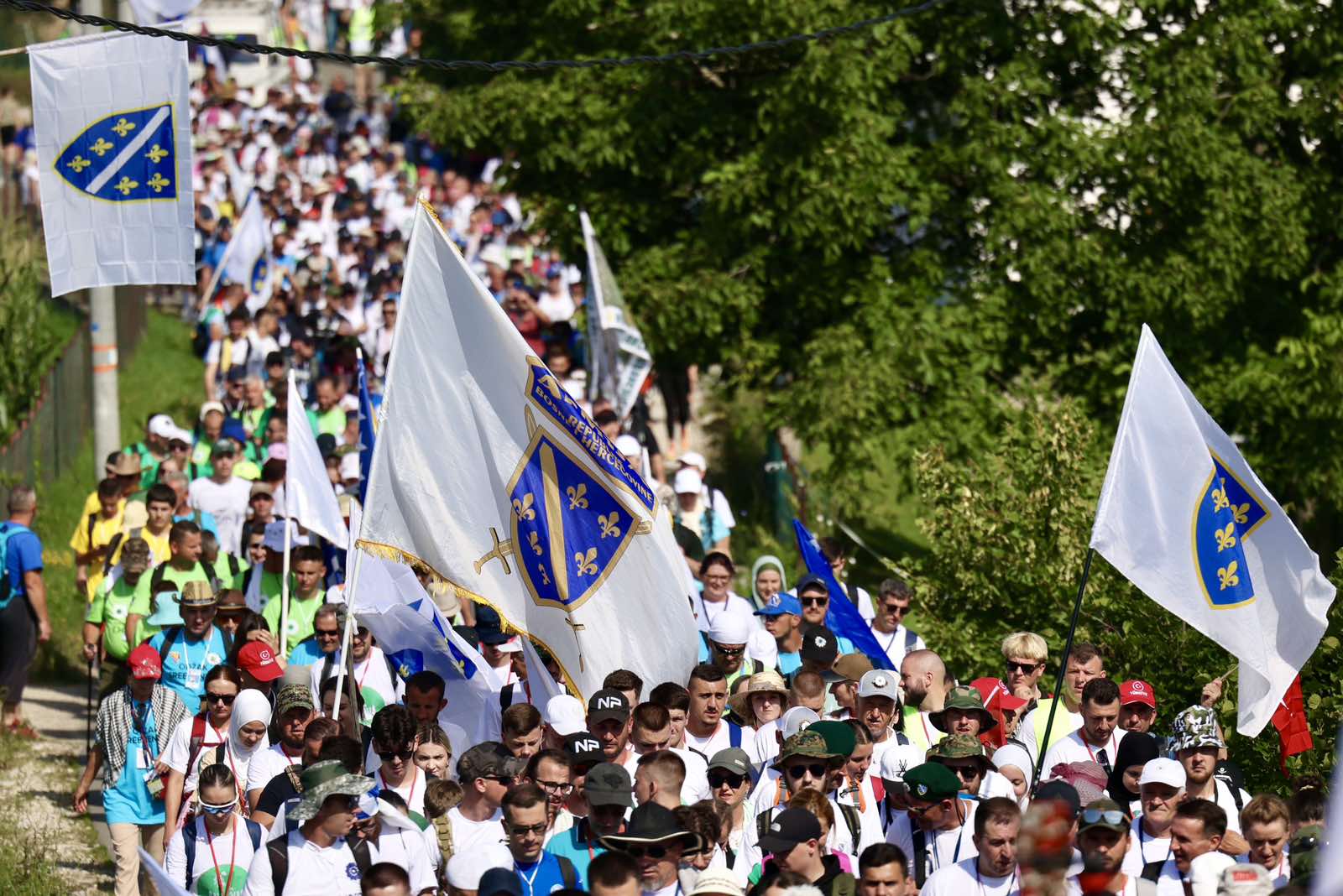
Around 5,000 people set off this morning from Nezuk near Sapna, heading to Potocari to pay tribute to the thousands of men and boys killed in the Srebrenica genocide in July 1995.
Over the next three days, they will traverse the route taken by Srebrenica residents 29 years ago as they attempted to reach free territory—Tuzla or Kladanj. Survivors of the Srebrenica genocide are leading the "Peace March" again this year. Among those in the column was the Ambassador of the Republic of Turkey to Bosnia and Herzegovina, Sadik Babur Girgin.
Participants of the "Peace March" are expected to arrive in Potocari on July 10, and the following day they will attend the collective funeral at the Srebrenica-Potocari Memorial Center cemetery, where the remains of 14 more genocide victims will be buried this year.
The "Peace March," organized for the 20th time this year, commemorates the 29th anniversary of the genocide against the Bosniaks of the "United Nations Safe Area" of Srebrenica. For the survivors, the march is a way to heal from their trauma and a responsibility to share their experiences and stories with younger generations.

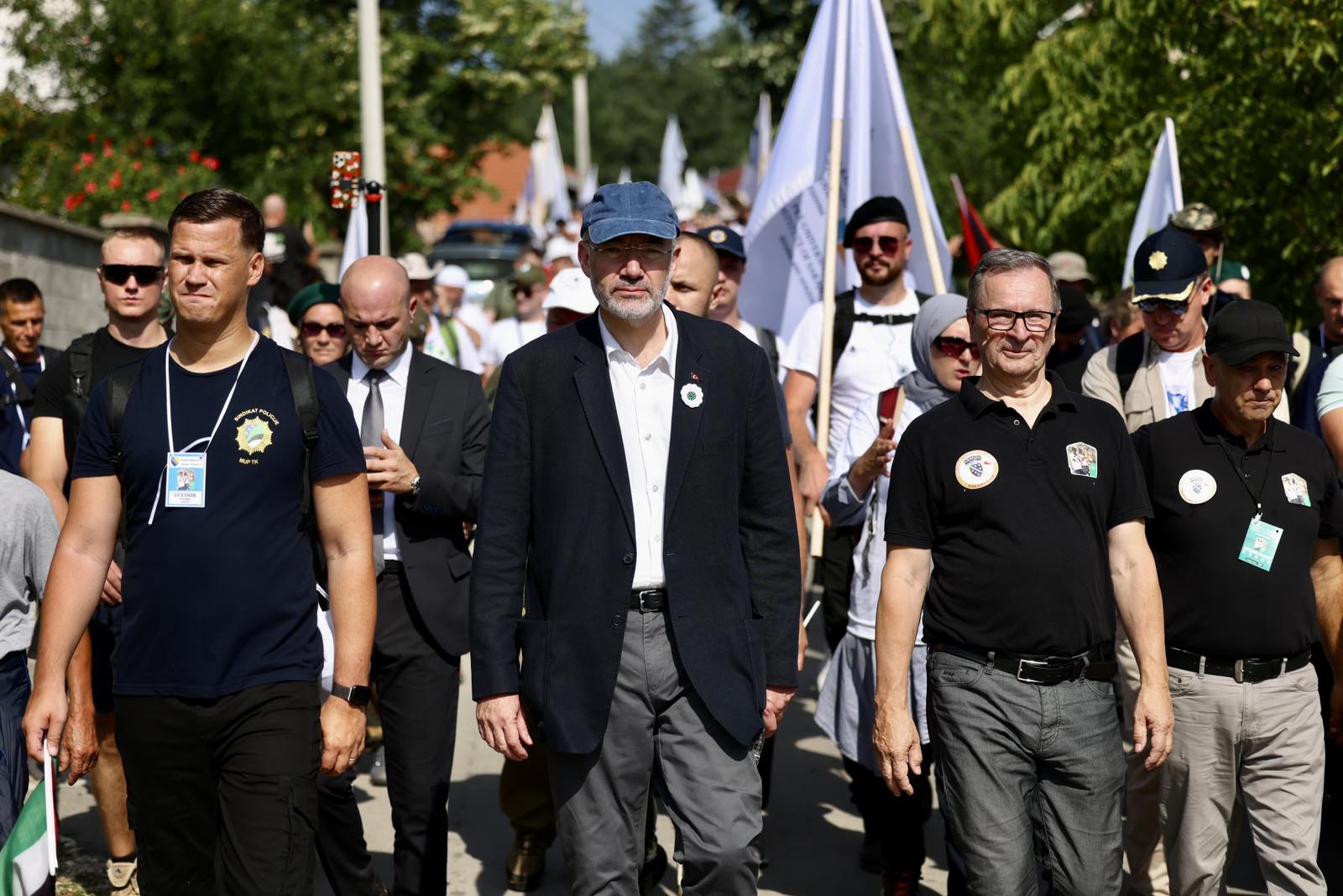

Suljo Cakanovic, president of the Subcommittee for the "Peace March," stated that all technical preparations and logistical support have been completed.
"The route of the 'Peace March' will remain unchanged, cleared, and safe for all participants," explained Cakanovic, noting that this year, around 5,000 participants are expected.
He emphasized that each year the number of participants exceeds the registered number.
"I am satisfied because this is the 20th anniversary of the 'Peace March,' which has maintained its message of peace and the hope that Srebrenica will never be repeated. This march aims to honor the innocent Bosniak victims of July 1995. We have participants from many European countries, as well as the United States and Australia. Participants come from Serbia, Croatia, Montenegro, Slovenia, Austria, Germany, Finland, Denmark, France, the Netherlands, Iran, and Turkey," added Cakanovic.
This year, Efedina Cehajic from Visoko is participating in the "Peace March" for the first time.
"It's my first time on the 'Peace March,' although I have wanted to participate for several years. I finally managed to align my obligations and physical readiness. I started with my husband. My message is that Srebrenica should never happen to anyone again. We are here with a team, and we have physically prepared for this journey. We hope to overcome all obstacles," Cehajic told Anadolu.
Nejla Hodzic (18) from Sarajevo started the "Peace March" with her cousins and friends. For her, the march is particularly emotional because it follows the route her father took in July 1995. He is one of the survivors of the Srebrenica genocide.
"This is my third year walking the 'Peace March.' The first time I went with my father, who survived this route. Walking the same path he did is very emotional, especially during breaks for historical lessons and reciting Fatiha. It's crucial to remember what happened in Srebrenica," added Hodzic.
A group of about 100 people from Turkey joined this year's "Peace March." Among them is Mustafa Ergun from Istanbul.
"There are people here from various Turkish cities. I have participated in the 'Peace March' since 2017. We are here every year, and our group grows each year, now numbering around 100. When I first came to the 'Peace March,' I thought it would be a one-time visit. However, it has become a duty for us. We want to come every year and believe we should be here," said Ergun.
Also participating is Mehnur from Istanbul, whose family moved from Novi Pazar to Turkey 50 years ago.
"I participated in the 'Peace March' for the first time last year. It was very difficult. Walking 100 kilometers is not easy, but then I told myself that no one is forcing me or trying to kill me; I have water and food...I am here to pay tribute to the victims of genocide," said Mehnur.
Yusuf Ahmet Kulca from Istanbul is also participating for the third time.
"Each time I participate, our responsibility grows. We want to participate and invite as many young people as possible. It's essential that the genocide is not forgotten," added Kulca.
The "Peace March" is a memorial event held every July to mark the anniversary of the genocide against Bosniaks in the "United Nations Safe Area" of Srebrenica in July 1995.
The "Peace March" aims to build, promote, and nurture a culture of remembrance of the genocide against Bosniaks in Srebrenica, and to prevent the denial, relativization, and negation of genocide crimes.
The "Peace March" lasts for three days, with participants walking about 100 kilometers from Nezuk to Potocari. This path was taken in the opposite direction, from Potocari to Nezuk, by Bosniaks escaping during the occupation and capture of the "United Nations Safe Area" of Srebrenica by Serbian military and police formations in July 1995.
Participants of the "Peace March" walk about 30 kilometers daily, and certain parts of the route are extremely demanding, inaccessible, and require substantial physical fitness.
So far, 6,751 victims of the genocide have been buried at the Srebrenica-Potocari Memorial Center, while 250 victims have been buried in local cemeteries by the decision of surviving family members.
The victims come from various municipalities, with most from Srebrenica, Bratunac, Vlasenica, Zvornik, and Milici. Genocide victims were found in 150 different locations, including 77 mass graves. The youngest victim buried in Potocari was a newborn baby girl, Fatima Muhic, and the oldest was grandmother Saha Izmirlic, born in 1901.
Over a thousand genocide victims are still being searched for.
Members of the Army of the Republic of Srpska (VRS), under the command of the then-President of RS Radovan Karadzic and the main commander of VRS Ratko Mladic, killed more than 8,000 Bosniak men and boys during the genocide in Srebrenica and its surroundings in July 1995.
The crime in Srebrenica, the largest on European soil since World War II, has been characterized as genocide by both domestic and international courts.
Radovan Karadzic was sentenced to life imprisonment for genocide, crimes against humanity, and violations of the laws and customs of war during the war in BiH by the International Residual Mechanism for Criminal Tribunals (IRMCT), the successor to the International Criminal Tribunal for the former Yugoslavia (ICTY) in The Hague.
Ratko Mladic was also found guilty of genocide and sentenced to life imprisonment by the same court in The Hague.
At least 47 individuals have been convicted for crimes in the Srebrenica area, receiving sentences totaling over 700 years in prison.
Kakvo je tvoje mišljenje o ovome?
Učestvuj u diskusiji ili pročitaj komentare





 Srbija
Srbija
 Hrvatska
Hrvatska
 Slovenija
Slovenija









